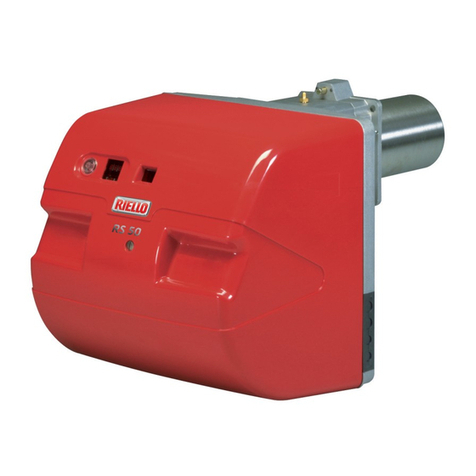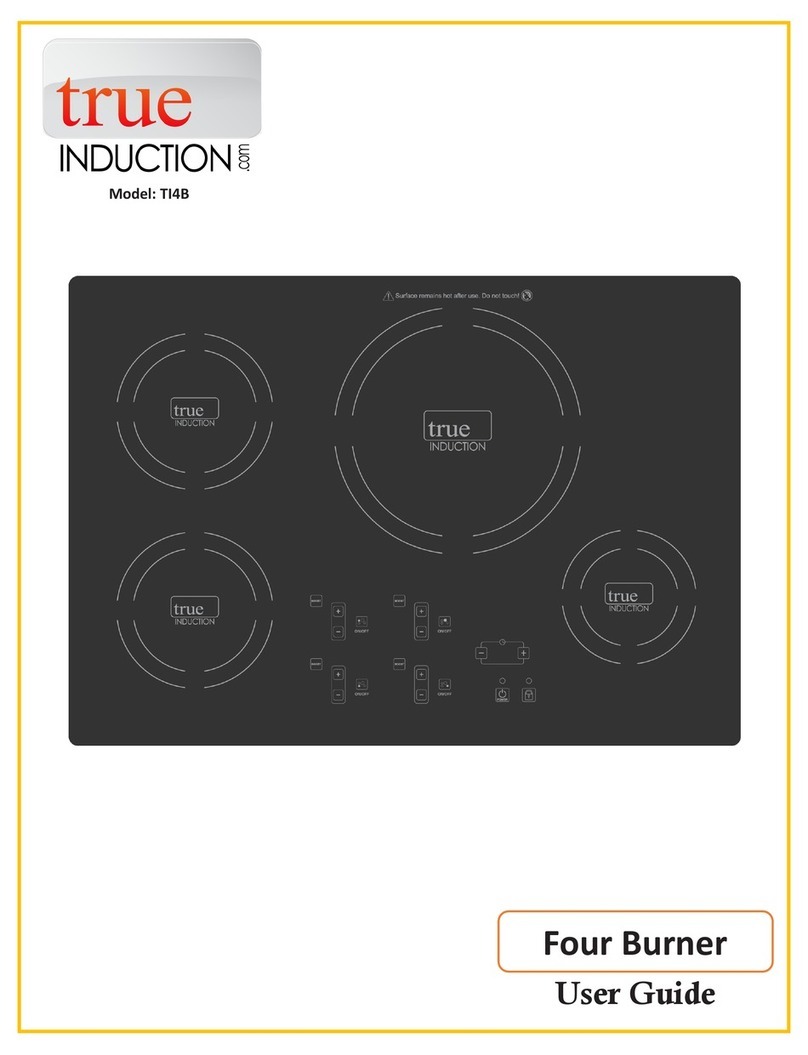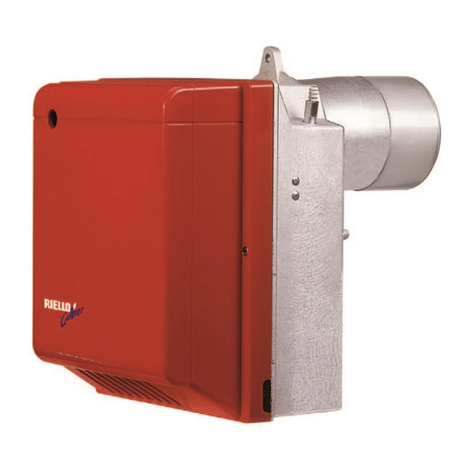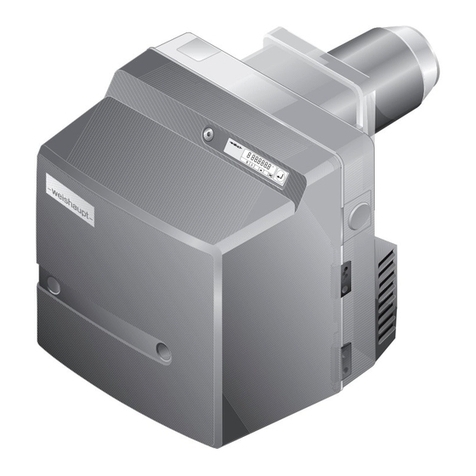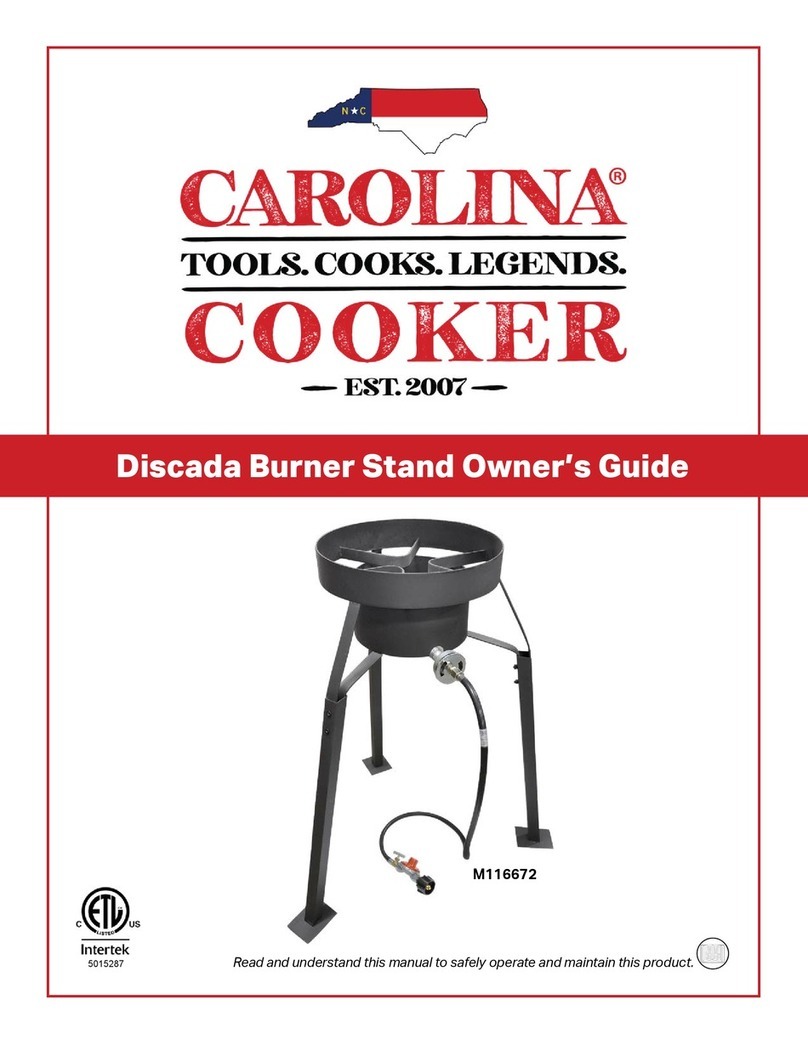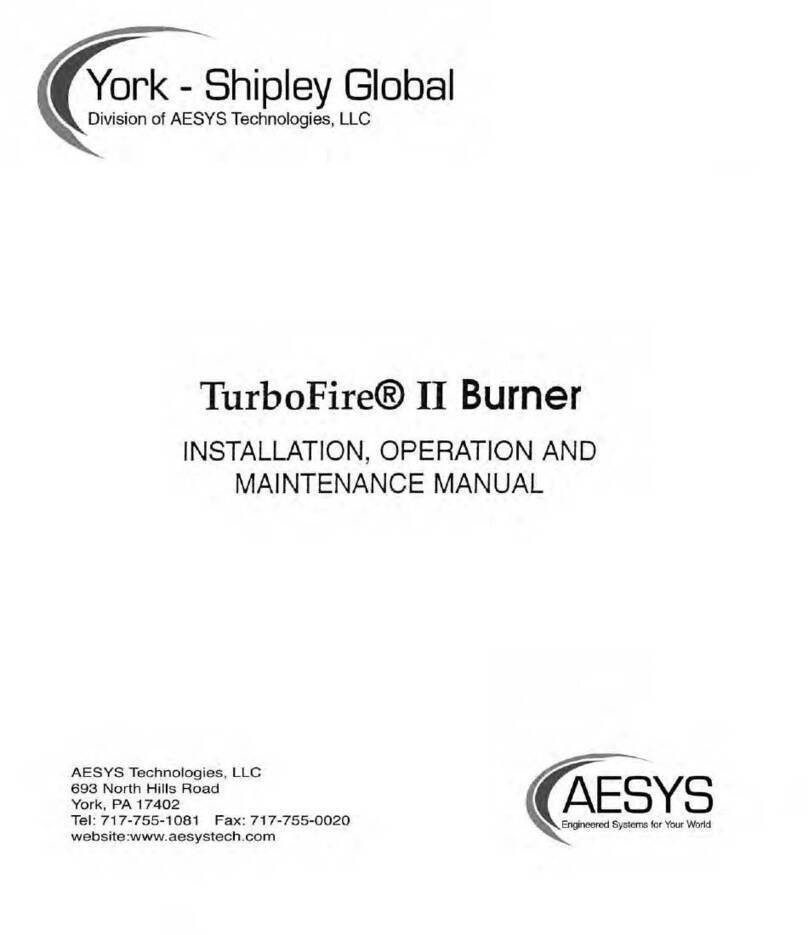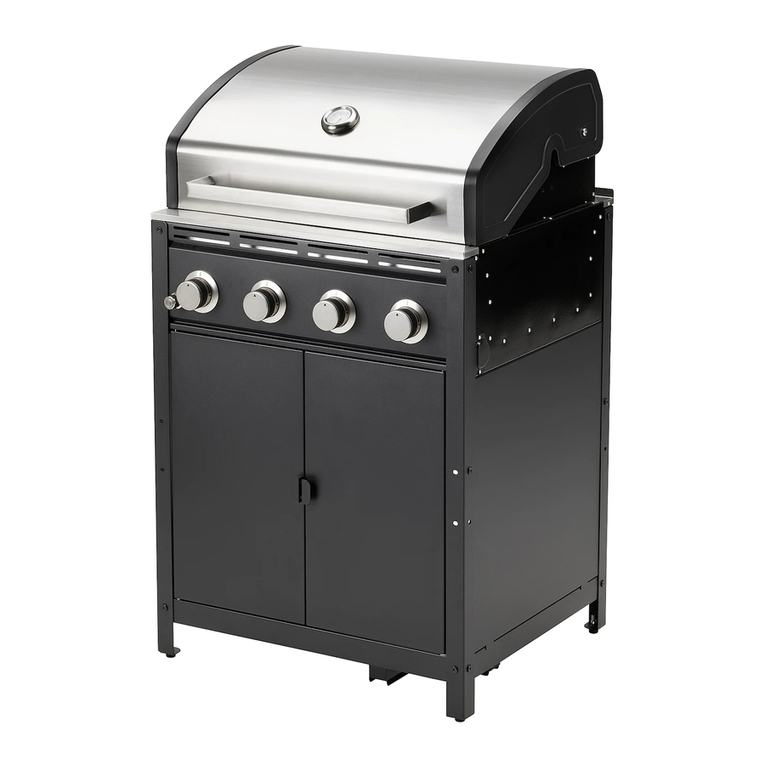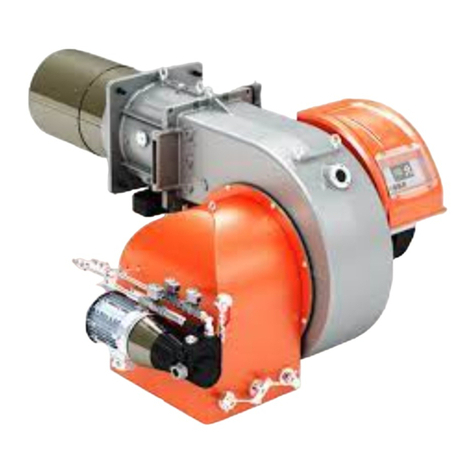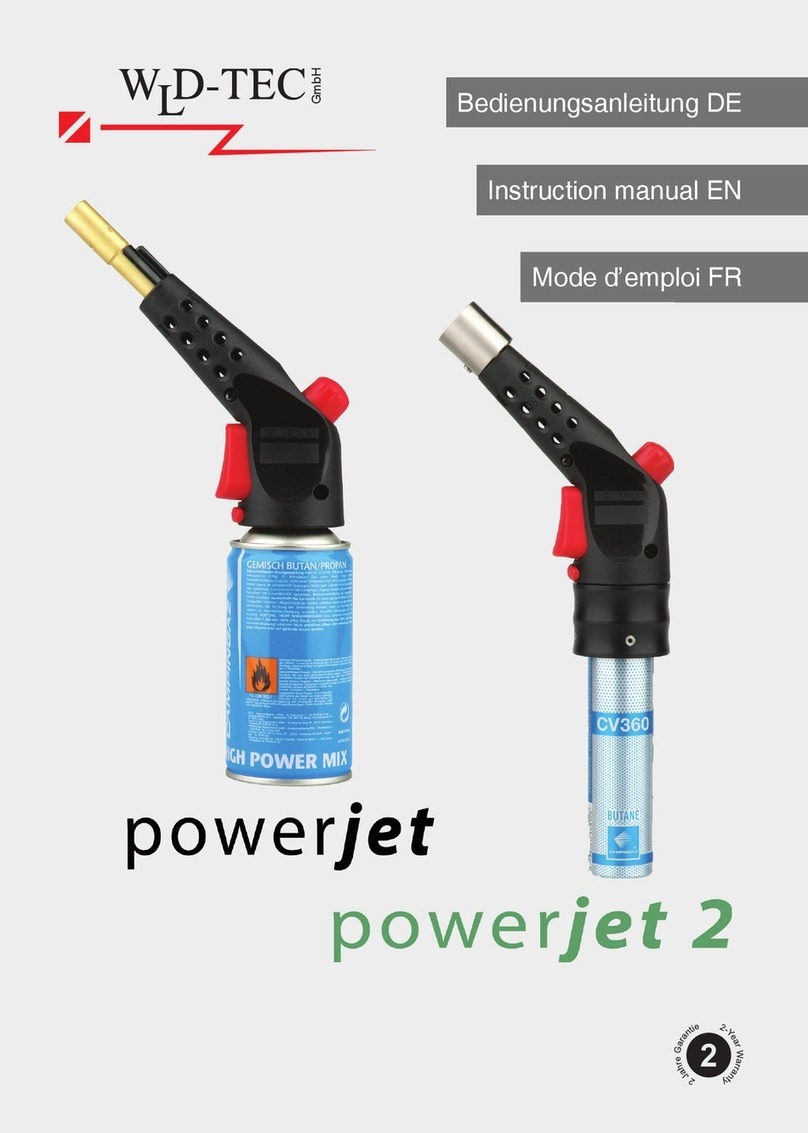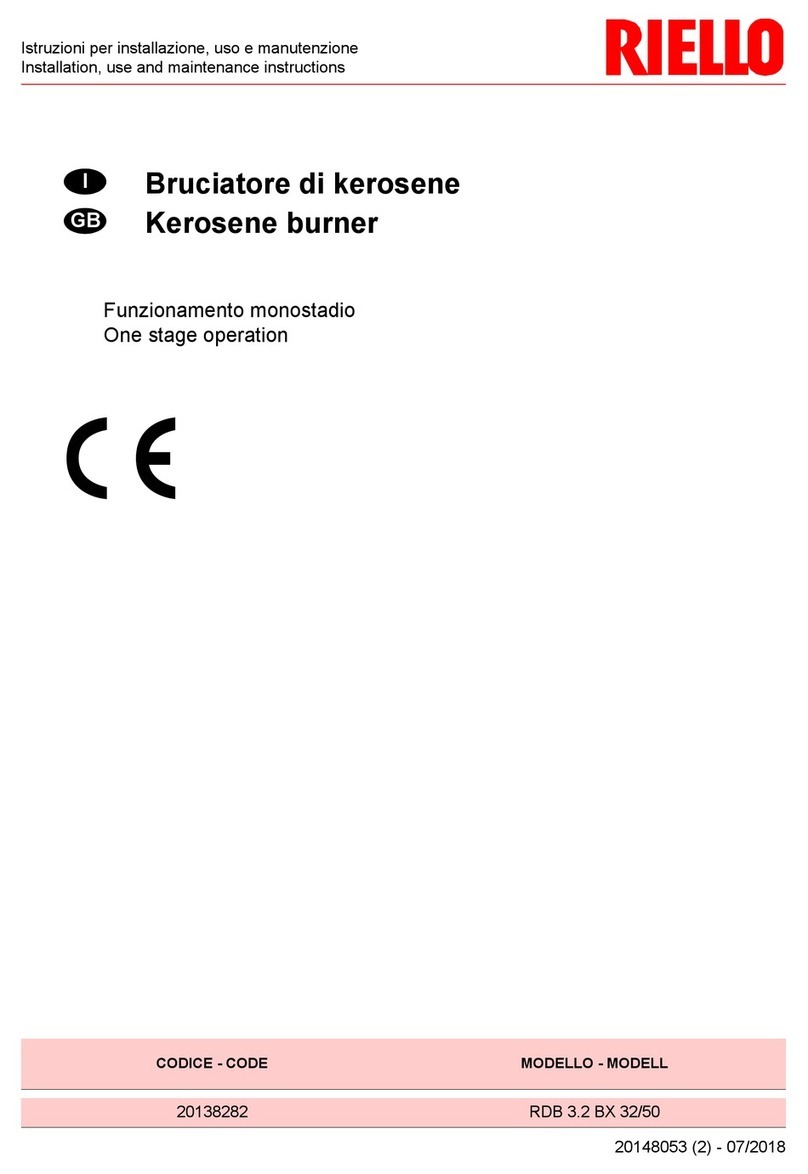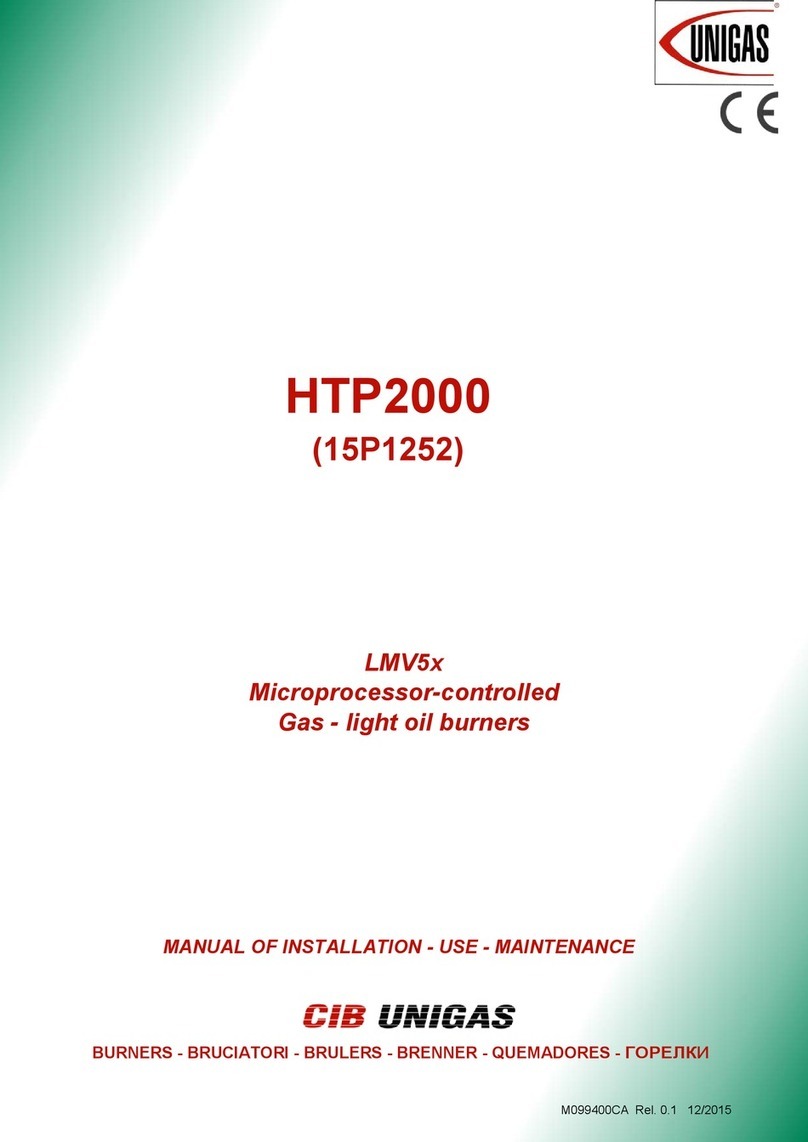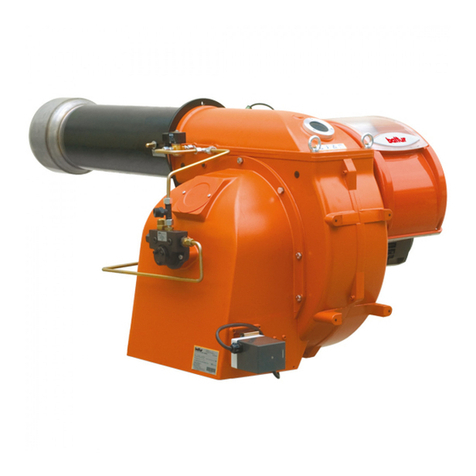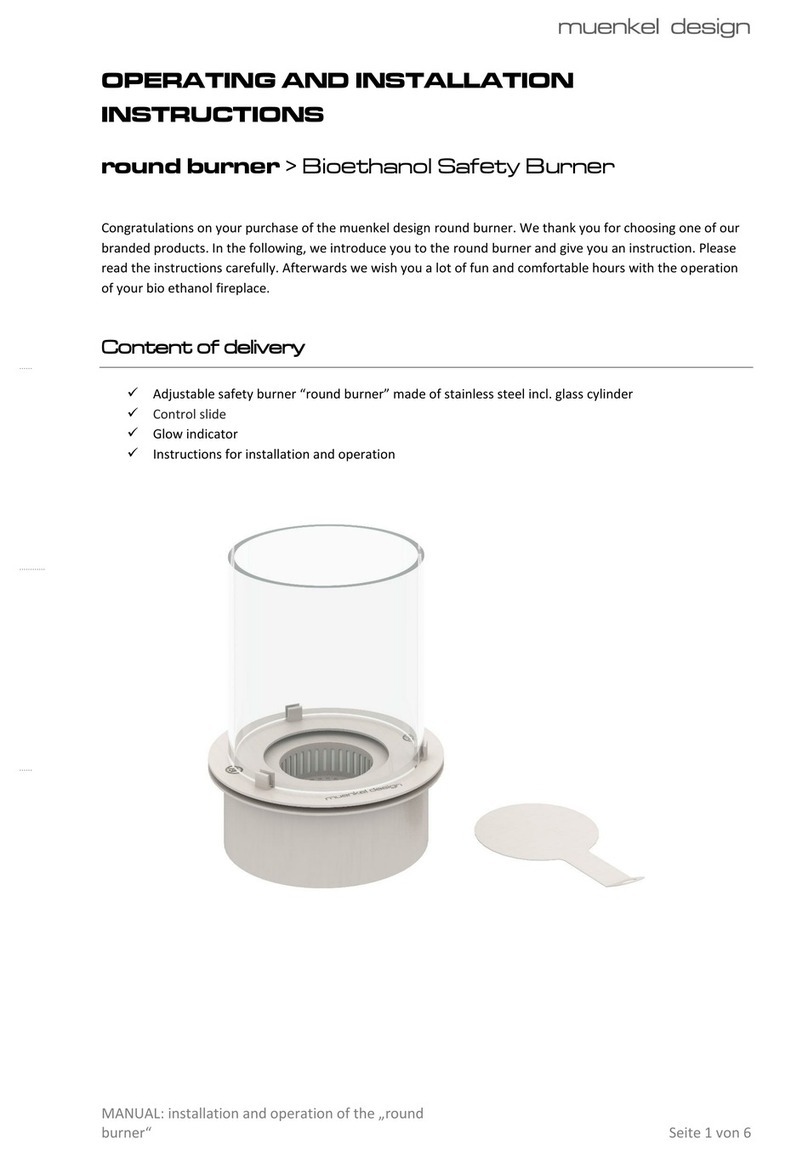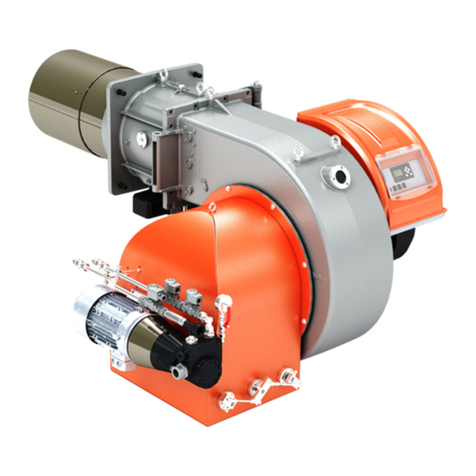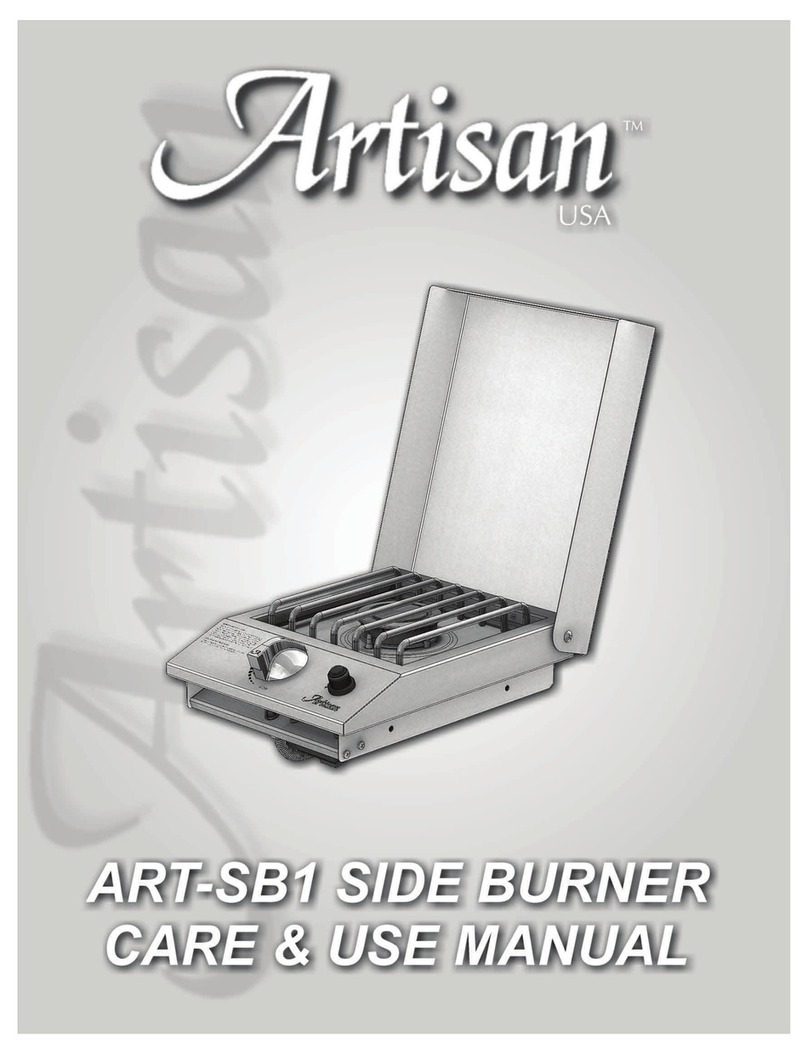SECTION I: GENERAL SAFETY AND WARNINGS
•Do not attempt to operate the burner without first familiarizing yourself with burner operating
instructions!
•This burner must only be serviced by fully trained and qualified personnel.
•Do not operate this equipment until the equipment has passed all safety inspections required by
your area.
•Before performing any service work on the burner, turn OFF ALL manual fuel shut offs valves,
including pilot gas shutoff valve, and turn OFF ALL electrical power to the appliance and any
other equipment that is electrically interlocked with the appliance.
•Do not bypass flame management sequencing and safety interlocks!
•This burner utilizes fuel that is flammable and potentially explosive. If smell of fuel is present
evacuate the area and call gas supplier and/or fire department.
•Do not enter a furnace, boiler or fired vessel.
•Use and storage of gasoline or other flammable liquids and vapors in open containers in the
vicinity of this burner is hazardous and could result in a fire or explosion.
•DO NOT use Teflon tape or components with Teflon as an oil or gas pipe sealant as Teflon can
cause valves to fail, creating a SAFETY HAZARD. All manufacturer warranties are voided and all
liability rests with the INSTALLER when evidence of Teflon is found. ONLY use a pipe sealant
approved by the Underwriters Laboratories for assembly of oil and gas piping.
•Castable refractory dust contains cristabolite and / or crystalline silica and the ceramic fiber
refractory contains fibers, all of which may be carcinogenic. Use proper and approved respiratory
protective equipment, as well as any other necessary personal protective equipment required to
avoid exposure.
•If this appliance is not installed, vented, operated and maintained properly per manufacture
instructions, it could expose you to hazardous substances in the fuel or hazardous fumes from
fuel combustion which can cause death or serious illness and are known by the State of
California to cause cancer, birth defects and reproductive harm.
•This manual has been prepared to assist in installation, operation and maintenance of your
burner. Only appropriately trained and qualified personnel should be permitted to operate this
equipment. The instructions contained herein should be read carefully before operating the
equipment.
•Improper operation of the equipment will result in injury to persons or loss of life and damage to
equipment. Access Combustion shall assume no responsibility for the improper or unsafe
operation of the burner due to failure to adequately address the concerns above.
•The information contained in this manual is to be used as a guide ONLY and may be superseded
by project specific specifications and drawings.

